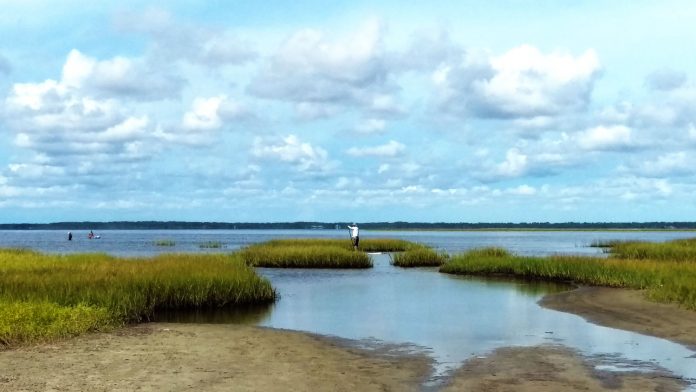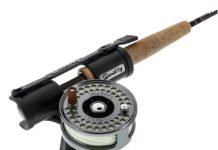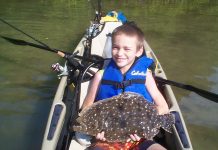November 21, 2014 By

If you are like me, you probably associate mangrove stands and shorelines as places to catch redfish at higher tides. Science and a little bit of knowledge will change what you think about these “trees”. Mangroves are an important part of our overall ecosystem but have a tremendous role in the saltwater environment and fisheries. Tropical and subtropical, mangroves are similar to snook: A warmer climate growth, you do not see mangroves in much of the United States but see them along a majority of undeveloped shoreline from the Tampa Bay area down and around the Keys and all the way up to central Florida on the Atlantic coast.
Structure and Habitat, mangroves do deserve our respect and protection: “Mangrove removal disturbs these underlying sediments, often creating problems of trace metal contamination of seawater and biota.” In their juvenile years: Snook, redfish, snapper, grouper, speckled trout, killifish, crabs and shrimp all benefit from the submerged roots of the mangrove tree systems. A nursery for small fish to avoid certain harm in open water from predation, healthy mangroves lead to healthy fisheries. From Wikipedia “Florida Mangrove”:
The Florida mangrove system is an important habitat for many species. It provides nursery grounds for young fish, crustaceans and mollusks, and for sport and commercial purposes. Many fish feed in the mangrove forests, including snook (Centropomus undecimalis), Gray or Mangrove snapper (Lutjanus griseus), Schoolmaster snapper (Lutjanus apodus), tarpon, jack, sheepshead, red drum, Hardhead Silverside (Atherinomorus stipes), juvenile Blue Angelfish (Holocanthus bermudensis), juvenile Porkfish (Anisotremusvirginicus), Lined Seahorse (Hippocampus erectus), Great Barracuda (Sphryaena barracuda), Scrawled Cowfish (Lactophrys quadricornis) and Permit (Trachinotus falcatus), as well as shrimp and clams. An estimated 75% of the game fish and 90% of the commercial fish species in south Florida depend on the mangrove system.

And don’t forget about the birds. Anyone who has spent any amount of time around these trees knows that they are the home for dozens of species of birds.
The branches of mangroves serve as roosts and rookeries for coastal and wading birds, such as the brown pelican (Oelicanus occidentalis), roseate spoonbill (Ajajia ajaia),Frigatebird (Fregata magnificans), Double-crested cormorant (Phalacrocorax carbo), Belted Kingfisher (Megaceryle alcyon), Brown Noddy (Anous stolidus), Great White Heron and Wurdemann’s Heron, color phases of the Great Blue Heron (Adrea herodias), Osprey (Pandion haliaetus), Snowy Egret (Egretta thula), Green Heron (Butorides striatus),Reddish Egret (Dichromanassa rufescens) and Greater Yellowlegs (Tringa melanoleuca).
Concerns worldwide: In 2010 it was reported that 20 to 25% of mangrove growth has been destroyed. In Florida the number is about 5% loss in the past century.
What other impact do they have on the ecosystem? The waste part is interesting. In our yards, the smartest people compost their leaves instead of destroying them or sending them to fill up the landfills. Decomposing mangrove leaves are actually consumed by a variety of organisms and microorganisms. Cycling upward in the system, these organisms are then food for fish and birds
Wind and storm erosion resistance is something that is notable about these trees but some suggest that angle is overplayed. The trees likely do more to change wave action and prevent the fast erosion of shorelines that the absence of these tree stands would change the nature of the erosion.
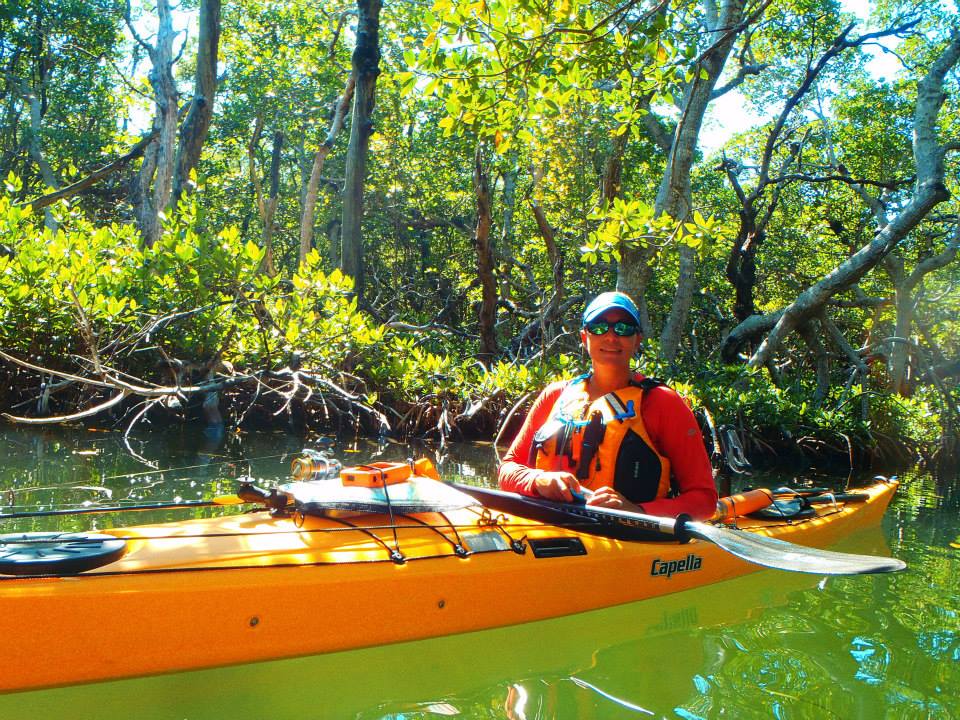
Shade? For me maybe. And in the hottest time of the year the fish and the birds too. I enjoy the mangroves for a break from the intense sun.
There are 110 total species of mangrove. There are just a few we have here in Florida. Black mangroves are also in areas of south Louisiana and south Texas. Africa, South America and areas of Central America have areas with mangroves. Pakistan, the Middle East, India, Asia, the Philippines, New Zealand and Australia also have mangrove growth.
What do we have the most of in Florida?
Red Mangrove- The most prolific in the region
“Red mangroves are characterized by a dendritic network of aerial prop roots extending into the soil. This allows them to live in anaerobic conditions by providing gas exchange. They obtain 82–125 feet in height in deltas and 26–33 feet along shoreline.The bark is gray on the outside with a red interior. These trees also have small white flowers that are wind pollinated with 10-12 inch long pencil shaped seeds.” (Wikipedia, Florida mangrove)
Black Mangrove
“Black mangrove trees grow to a heights of 133 feet and average 66 feet. They are characterized by vertically erect aerating branches (pneumatophores) extending up to 20 cm above the soil. The bark is dark and scaly and the upper surface of the leaves is often covered with salt excreted by the plant. This tree has white flowers that are bilaterally symmetrical and pollinated byHymenoptera and is the source of mangrove honey. The seed is a shaped and sized similar to a lima bean when germinated. Younger black mangrove trees are shade intolerant but become more shade tolerant as they mature.” (Wikipedia, Florida mangrove)
And the Buttonwood: Buttonwoods grow 39–46 feet but do not produce a true propagule in Florida. Tiny brownish flowers are located at the terminal ends of the branches forming a seed cluster known as the button. These trees are able to grow in areas seldom inundated by tidal water. Two glands are located at the apex of the petiole (leaf stalk) and excrete excess salts and extra floral nectar. (Wikipedia, Florida mangrove)
White Mangrove- an inland mangrove without the same root system as the Red or Black Mangrove. “White mangrove trees grow to 45 feet in height and up and tend to have a more erect form than the other species. Thy have erect, blunt-tipped pneumatophores that are used if they are growing in anaerobic conditions. The bark is white, relatively smooth and the leaves are oval shaped and flattened. Small yellowish flowers are located on the terminal ends of the branches. These may germinate into football shaped propagules. However this may not occur if they are in the northern part of their range” (Wikipedia, Florida mangrove)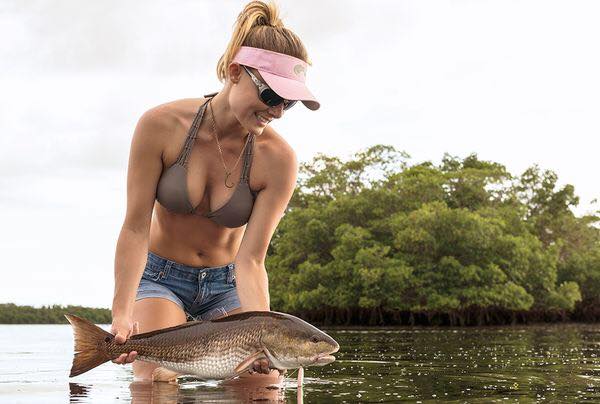
Where are they in Florida?
“Florida mangrove plant communities covered an estimated 430,000 to 540,000 acres(1,700 to 2,200 km²) in Florida in 1981. Ninety percent of the Florida mangroves are in southern Florida, in Collier, Lee, Miami-Dade and Monroe Counties.
Approximately 280,000 acres (1,100 km²) of mangrove forests are in the hands of theFederal, State and local governments, and of private, non-profit organizations. Most of those acres are in Everglades National Park. Mangroves cover a wide band all along the southern end of the Florida peninsula facing on Florida Bay, from Key Largo across to close to Flamingo, then inland behind the beaches and marl prairies of Cape Sable and all around Whitewater Bay. From Whitewater Bay, a broad band of mangroves extends up the Gulf coast to Marco Island, including the Ten Thousand Islands.
Mangroves also extend throughout the Florida Keys, although coverage has been reduced due to development. Florida Bay is dotted with small islands, which are often no more than mud flats or shoals more or less covered by mangroves. Biscayne Bayalso has extensive mangroves, but the northern part of the Bay has been largely cleared of mangroves to make way for urban development. Mangrove coverage is limited elsewhere, with the largest areas in the Indian River Lagoon on the east coast, and the Caloosahatchee River, Pine Island Sound and Charlotte Harbor estuaries and Tampa Bay on the west coast. Mangroves are tropical plants, killed by freezing temperatures. These trees can range about halfway up the coast of the Florida peninsula due to mild winter climate and the moderating effect of the warm waters of the Gulf of Mexico on the west coast and the Gulf Stream and Atlantic Ocean on the east coast. The Florida Mangrove community is found as far north as Cedar Key on the Gulf coast of Florida, and as far north as the Ponce de Leon Inlet on the Atlantic coast of Florida. Black Mangroves can regrow from roots after being killed back by a freeze, and are found by themselves a little further north, to Jacksonville on the east coast and along the Florida Panhandle on the Gulf coast. Most of Florida is sub-tropical, making it not ideal for mangroves, so the trees tend to be shorter and the leaves smaller in northern and central Florida than in tropical regions. In deep south Florida and the Florida Keys, the tropical climates allows mangroves to grow larger due to being frost free.” (Wikipedia, Florida mangrove)
We have great fishing in Florida but where would we be without the mangroves? Enjoy them, appreciate them and help others to do the same.
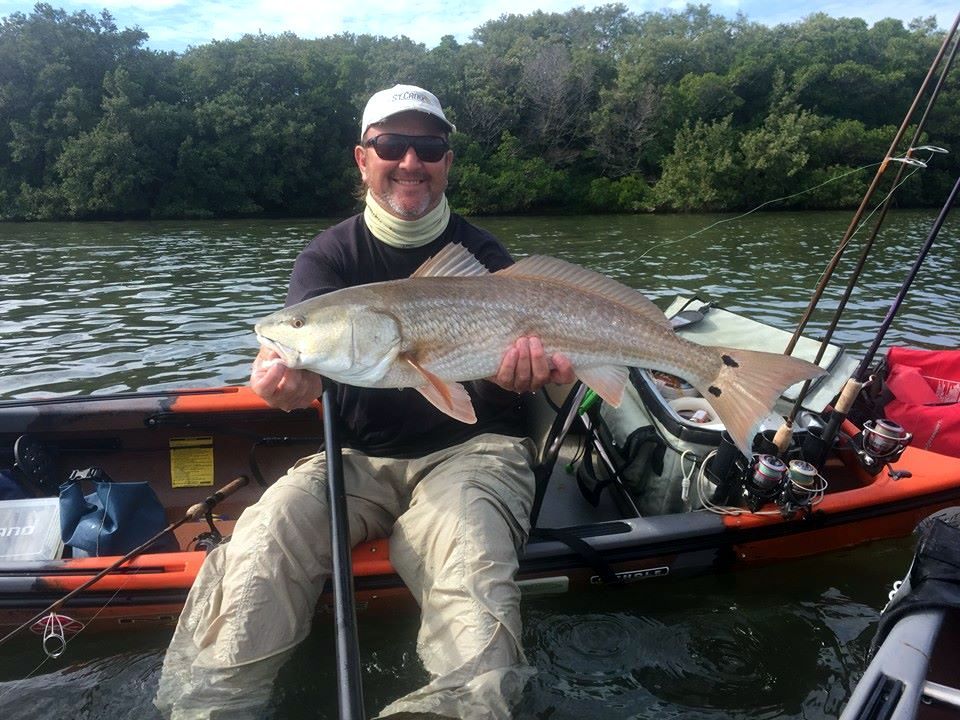
Sources:
Wikipedia Mangrove
Neil Taylor
Owner and guide: Strike Three Kayak Fishing
(Cell) 727-692-6345 LivelyBaits@aol.com
Owner and site administrator: Florida Fishing Magazine
- The Neil Blog… - July 26, 2023
- The Catfish - July 26, 2023
- update - July 22, 2023
